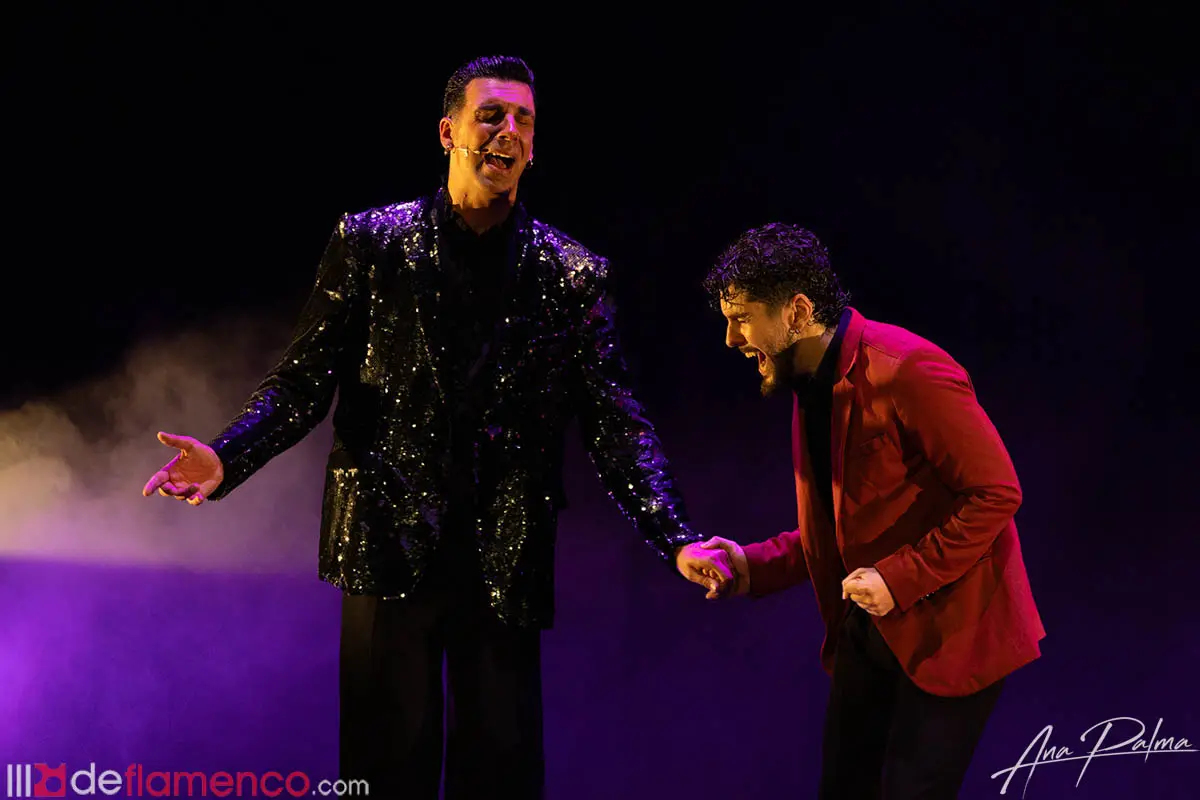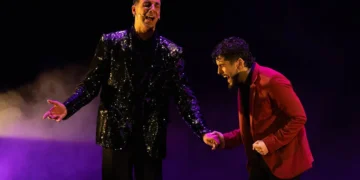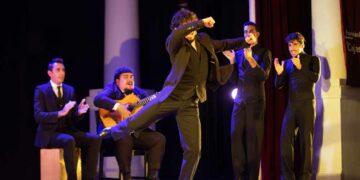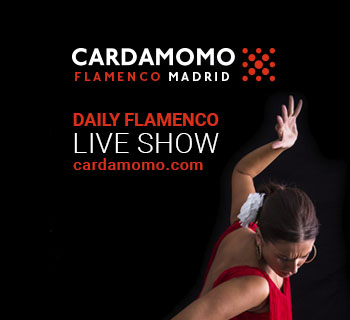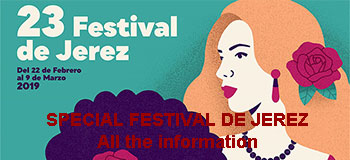“Trémula” – Blas Infante Social Center
Cover photo: Ana Palma – Complete photo gallery & vídeo
They haven’t met up to rehearse because they are impeccably dressed. Moreover, many fellow artists from both sides—Heredia’s and Sellés‘—have joined the gathering. And as the days go by, the Blas Infante Social Center is filling up; it’s almost packed. Some even venture to walk here from the city center. “It’s not that far,” someone remarks. If it weren’t for these details, we could say that we are witnessing the formal unveiling of a rehearsal, a playful exercise between two dancers in love with cante. But it’s something more. As Carnaval author Juan Carlos Aragón would put it: it is the communion of people singing.
This is not about changing their tax category and ceasing to do what they already excel at—dancing—but about expanding their artistic tools, strengthening those muscles. This, after all, is nothing new in flamenco and has become quite fashionable in recent times. In this light, Trémula presents itself as a shared exercise in dance and song, with a simple structure and no stage artifices, alternating solo performances with duets. It is these duets that give the piece its strength, as at times, the sequence of solos can feel slow and predictable. What truly captivates us—what we need—is to witness the novelty that emerges when Miguel Ángel and Alberto merge, create together, engage in dialogue, and weave their art. To empty ourselves of certainties and be filled with shared intimacy.
What truly sets this performance apart is the way both dancers listen to and respond to cante: Miguel Ángel Heredia stands out for his unmistakable expressiveness, while Alberto Sellés impresses with his precision and speed, creating unforgettable moments, especially in siguiriya, alegrías, tientos, and, of course, bulerías. They know the intricacies of flamenco song inside out—both professionally and as aficionados—and it shows in their meticulous exploration of every nuance. Even so, some repetitive lighting choices and predictable transitions take away some of the fluidity of the performance. While changes in positioning and the use of different corners of the stage add variety, the overall piece has yet to fully come together. With more stage time, the show could achieve greater cohesion and surprise, making the most of its raw potential.
Despite everything, they are never alone—the atrás was outstanding: Paco Vega on percussion, Juan de la María and Iván Carpio on vocals, and the phenomenal Jesús Rodríguez on guitar. The choice of the accompanying team is never trivial, but in this case, the singers poured their souls into their performance, not only while accompanying the dance but also—most notably—when Heredia and Sellés expressed their love for their sung repertoire, with encouraging jaleos and those little smiles of amazement at unexpected musical discoveries. Ay! How strange life is, how strange the world is—and then, suddenly, these fleeting moments. What more could one ask for?



